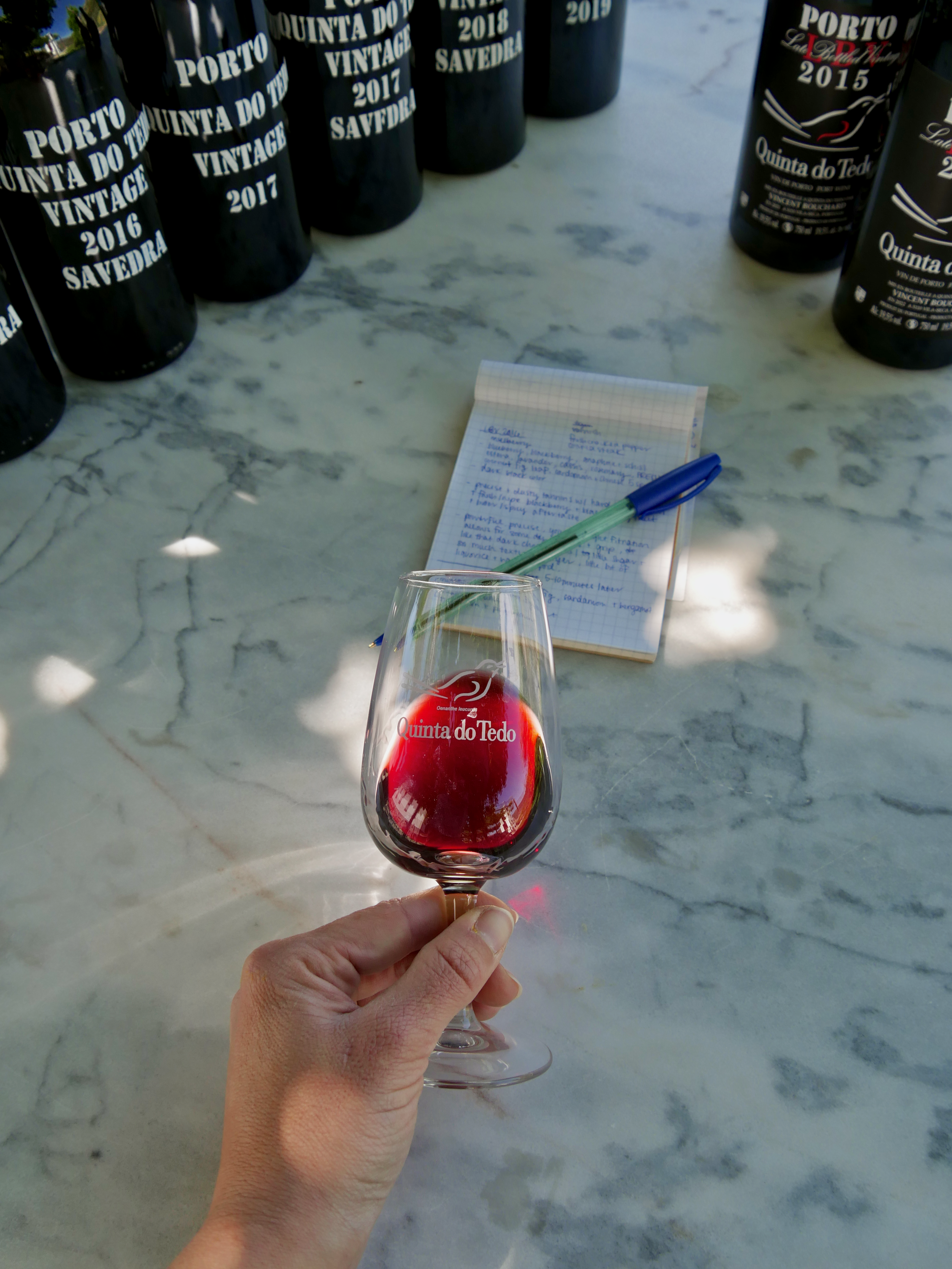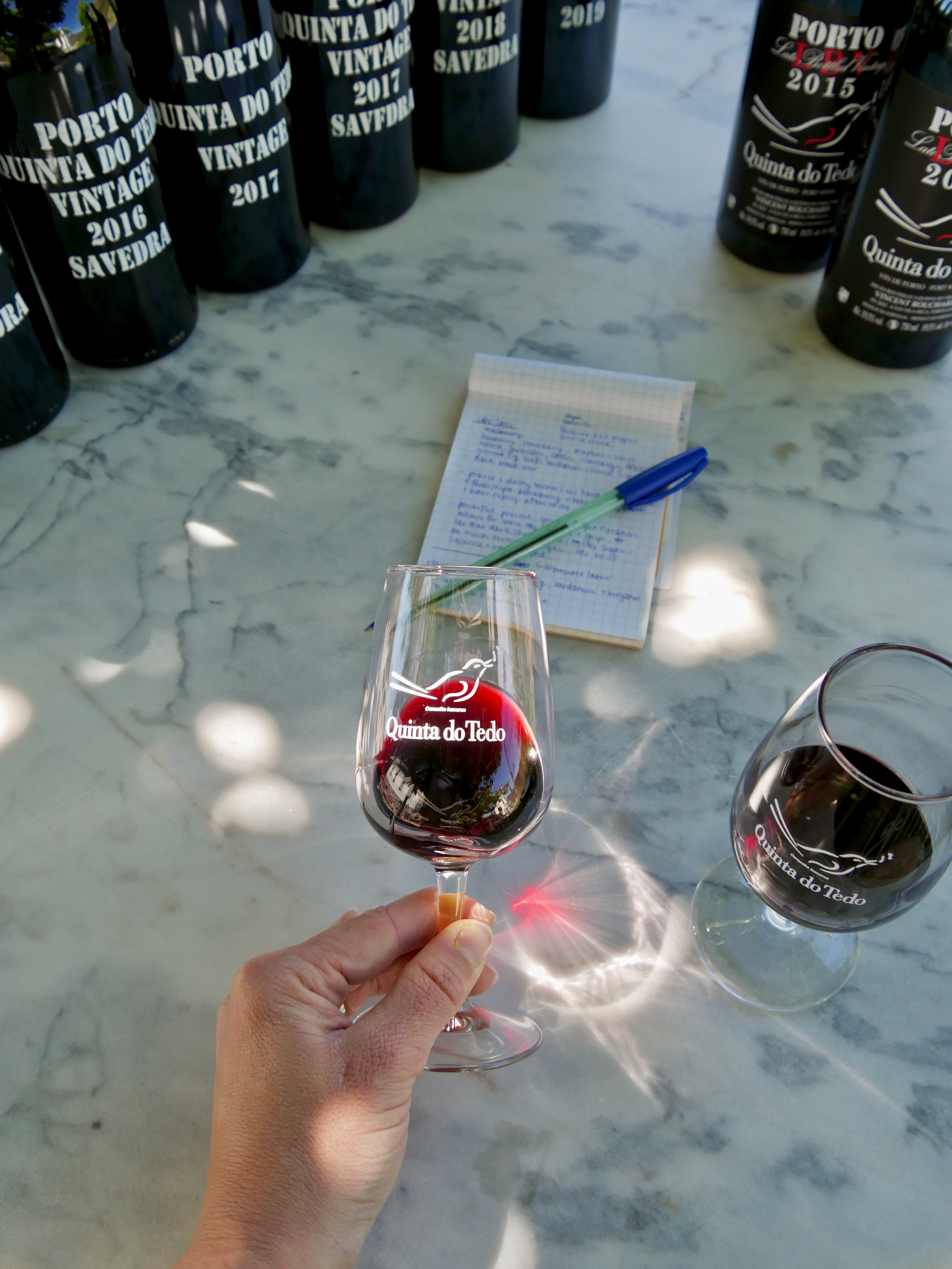New LBV 2016 and sold-out LBV 2015
Our just-released LBV 2016 is a stellar follow-up to our LBV 2015!
Winemaker Jorge Alves nailed yet another Late Bottled Vintage (LBV) in the back-to-back 2015 and 2016 sequence of Vintage-quality harvests.
Our LBV Ports are produced with our estate’s best grapes which we hand-harvest and traditionally process via foot treading in our 18th-century lagares to extract colour, tannins and flavour from their skins and seeds. When about half the grapes’ sugars are converted into alcohol by native vineyard yeasts, we fortify their partially fermented juices with aguardente (a neutral grape brandy). This stops fermentation and leaves the Port slightly sweet (although our LBV Ports are dryer than most) and with ~19.5% alcohol.
We then age our LBV Ports for 4 years in large 5.000-litre neutral French oak foudres. This refines the Ports’ textures and flavours, making them absolutely ready-to-drink upon purchase (or after a few years of ageing in your home cellar - as our LBV Ports are only lightly filtered they have some ageing capacity in bottle).
2016 provided low fruit yields with great concentration. Our LBV 2016 is chock-full of rich and ripe mulberries, cassis, back cherries and blueberries with beautiful floral hints of esteva (Douro’s famous rock rose) and lavender (Portugal’s national flower).
Serve it below room temperature and experience its evolution in your glass - powerful black fruit gives way to nuances of schist rock and graphite followed by elegant red fruit and cardamom, Chinese five-spice and black pepper aromas. A soft tinge of coconutty fig leaf and cool menthol package up the fresh bouquet. Grippy yet refined tannins, in balanced tension with sugar and acidity, make for a precise finish. You can bask in the complex company of our LBV 2016 for hours.
Of course, this Port could be paired with the traditional dark chocolate desserts and aged white cheddar or blue cheeses, but not only! One of the Bouchard Family’s favourite LBV Port pairings is juicy duck magret with blueberry coulis and aged gruyere potato gratin. Other surprising matches-made-in-heaven could be a pepper-rubbed steak to accentuate this 2016’s more savoury and dry nuances, or a wild berry pie to tease out its dense fruit layers.
Two important things to remember when pairing Port with food are:
What’s on your plate shouldn’t be sweeter than your Port! Beet or cane sugar can overwhelm the grapes’ natural sugar and make the Port seem unbalanced, hence our failproof salty cheese or bitter dark chocolate pairing suggestion.
Enjoying a young Port with a more powerful structure, like this LBV or a young Vintage, alongside meat or cheese gives the tannins in the Port some protein to bite into instead of attacking those in your saliva, which can leave your mouth feeling unpleasantly rough and dry.
A line-up of our Vintage 2015, 2016, 2017, 2018 and new 2019 Ports from our Single Quinta estate. On extra special years, we also produce limited Vintage bottlings from our oldest Savedra parcel - a 60+-year-old field blend of 20+ native Douro Valley and Portuguese grape varieties.
Vintage 2019 - proof that every year be a Vintage year at Quinta do Tedo?
We are waiting on back labels (all our Vintage and Old Tawny Ports’ stencilled front labels are hand-painted on-site) to release our Vintage 2019. It should be available in our tasting room and online shop (which ships direct to customers’ doorsteps across the EU) in a week or two, so stay tuned!
This new Vintage follows a series of back-to-back Vintages from 2015 to 2019. However, while 2016, 2017 and 2018 were “classic” Vintages, 2015 and 2019 were not. Classic Vintage years are those in which, for the vast majority of Port houses, ideal climatic conditions and the right amount of rain at the right time allow for a long growing season and the maturation of healthy grapes with complex and concentrated flavours that make for a great Vintage Port.
“Non-classic” Vintage years are those in which the aforementioned ideal conditions are only claimed by some Quintas whose fruit is harvested, processed and labelled under the name of that Single Quinta. As many larger producers have multiple Single Quintas they can produce Vintage Port from in non-classic Vintage years. Quinta do Tedo is, in and of itself, a Single Quinta - our grapes come exclusively from our 14 hectares of certified organic, classified grade A vineyards and we do not buy grapes. Technically, we can choose the best fruit from our best vineyard parcels, like larger Port houses choose the best fruit from their best Single Quintas, to produce Single Quinta Vintage Port each year.
But should we? Some argue this would devalue classic Vintage Ports’ limited availability and unique value, having been historically produced only 3-4 times per decade and making up only 2% of Ports on the market. Others argue that having a library of Vintage Ports from as many consecutive non-classic and classic Vintage years as possible could prove interesting to showcase the true expression of every harvest’s best grapes, in Port form.
Winemakers around the world producing non-fortified wines easily recall bad, mediocre, good and exceptional harvests as they have the physical proof of each to compare and contrast, watch evolve and learn from. The worst harvests give more value to the best harvests.
Port producers today have the tools, knowledge and experience to grow better grapes and use better equipment to produce better Vintage Ports in non-classic Vintage years. Besides, our customers and we too can learn so much more about our own terroir, climate (and how it’s changing) and grapes, and demystify this fine wine category, by tasting through consecutive years of its young, 10-year and 50+-year expressions.
Tasting our new Ports alongside their category forerunners with a lovely Tedo Valley backdrop as seen from our B&B pool lounge area.






